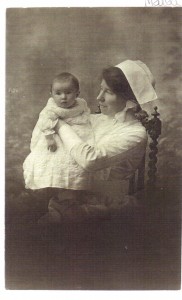 Before writing this, these are the facts I knew about my great-aunt Maud Reid: She was born in Manchester in about 1882, and before, during and after the war she was a nurse. My mother remembers her husband as ‘Uncle Willie’. Mum also remembers her as a handsome, elegant woman.
Before writing this, these are the facts I knew about my great-aunt Maud Reid: She was born in Manchester in about 1882, and before, during and after the war she was a nurse. My mother remembers her husband as ‘Uncle Willie’. Mum also remembers her as a handsome, elegant woman.
Firstly checking for a baptism record, I found that she had actually been born on 25th April 1880 and baptized on 22nd June 1881 in Collyhurst. This tells us that we should never trust the ages given in census records, and should always widen our searches for at least 2 to 5 years when looking for a specific birth record.
I then looked for her marriage. Using Ancestry.co.uk, I put her name into the search engine, the place name of Manchester, a date of 1908 with ten years either way, and the name William into the spouse’s name. No obvious results came up, so I tried spelling the name differently, and I also searched FamilySearch.org and the useful online parish clerks website for Lancashire at www.lan-opc.org.uk.
Nothing came up, so I searched for her in the 1901 and 1911 census records. In 1901 I believe I found her working as a servant (with her surname spelled ‘Reed’) in the household of a John Harrison, ‘traveller in confectionary’, the district of Chorlton. She is named as a domestic servant, but if this is her, then I suspect that she was working as a private nurse for the 2 year old Charles Harrison.
Domestic service was the most common job for single working class women before the First World War. Tough work, but it was better than working in the mills. This particular household was a small one – most people above working class status had servants at this time, often a nurse, cook or general maid.
In the 1911 she appears to be still single and still working with the Harrisons – but still as a domestic servant. If I was right about this being her, then she married quite late, as she was now 29 years old. There is also a visitor who is a nurse, but Maud is the only living-in servant.

As she was still single in 1911, I needed to search for a later marriage – and found a marriage in 1930 in Manchester to a William J OAKES. This would have made her 50 when she married. I checked this surname with my mother and, yes – she remembered, that was her name.
So Maud was single for a long time and married very late in life for those times. By her looks, I think she was strongly independent, intelligent and kind. Was she perhaps a suffragette? And what did she do during the war?
Many suffragettes either stayed away from home on the night of the 1911 census, or made a statement on the census paper itself. As a live-in servant, Maud would not have been able to do this, so we need to search other records. One of the best sources for searching anyone who took part in suffragette campaigns is the national newspaper archives. I checked the databases on FindMyPast and the British Newspaper Archive but found nothing.
She may not have been a suffragette, but we know that Maude was a woman perhaps ahead of her time – and so were some of her sisters. She also helped her youngest sister, Dorothy (who worked at Lewis’s) to organise a royal banquet; more about this when I look at Dorothy’s life.
So what did she do during WWI? FindMyPast has a database of military nurses. However, my searches produced no results. I then went to the National Archives website where you can search online for British Army nurses 1914-1918 (other nursing records are only available at Kew). The most likely records would be in the Queen Alexandra’s Imperial Military Nursing Service or the Red Cross. I tried all variations of the name but did not find anything for the nursing corps. Another useful website is the Red Cross site at: http://www.redcross.org.uk/About-us/Who-we-are/Museum-and-archives I tried a search here, but could not find a Maud Reid with any of the spelling variations.
In the TNA I did find a medal card for a Maude REID in the Queen Mary’s Auxiliary Corps Regiment, classed as ‘Worker’. I decided the £3.30 charge for downloading this record was worth it, even though I wasn’t totally sure this was her. The actual record does not tell us much so I googled for more information about the Queen Mary’s Auxiliary Corps. At www.1914-1918.net I found that this regiment was started in 1917 and made up of volunteers who worked mainly as cooks, caterers, clerks, telephonists and motor vehicle maintenance.
I don’t know whether this is my great aunt. Unfortunately, many World War I records were destroyed during World War II bombing, so it may be that Maud’s records have not survived. However, the available records show us that women were beginning to be seen as essential parts of the war effort, and despite the dreadfulness of the war, it did bring up many opportunities for young, single women such as Maud. For the first time they were involved in jobs such as vehicle maintenance and administration – previously thought of as male careers.
At home they were needed as nurses to look after the vast numbers of injured service men as they returned from the battlefields.
The Voluntary Aid Detachment (VAD) was formed in 1909 to provide nursing services in times of war. While many 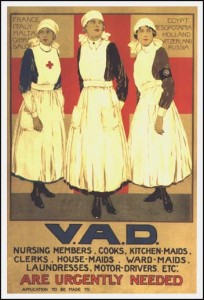 women – mostly middle and upper classes – offered their services at the outbreak of World War I, the Red Cross did not want civilian women serving overseas as they were not used to the hardships of the front line. However, the records show that those who did serve on the front line acquitted themselves with great fortitude and efficiency. As nurses became more and more necessary overseas, volunteers over 23 and with more than three years of hospital experience were allowed to serve overseas. VAD hospitals also opened at home in large British towns.
women – mostly middle and upper classes – offered their services at the outbreak of World War I, the Red Cross did not want civilian women serving overseas as they were not used to the hardships of the front line. However, the records show that those who did serve on the front line acquitted themselves with great fortitude and efficiency. As nurses became more and more necessary overseas, volunteers over 23 and with more than three years of hospital experience were allowed to serve overseas. VAD hospitals also opened at home in large British towns.
Mainly protected from the harsh realities of life in the past, it must have been a huge shock to many women to see the consequences of warfare, or to experience life close to the battlefield. It makes me think of the scene in Gone With The Wind when the spoilt Scarlett comes face to face with the thousands of wounded soldiers in Atlanta during the Confederate retreat in the American Civil War. And just as the way of life changed in Southern America after that war, Britain too faced great changes after the First World War.
More nursing records can be found at the Royal College of Nursing where you can search their collection:: http://rcnarchive.rcn.org.uk/. No results for Maud, though.
Given that we have a photograph of Maud holding a baby, I searched for Manchester hospitals for children. The National Archives tells me that the Manchester Northern Hospital was a hospital for women and children and was at Cheetham Hill Road, Manchester. This would be quite near to where Maud lived, so I would not be at all surprised if she had worked here. Unfortunately, there do not seem to be any records for this hospital.
The Representation of the People Act of 1918 allowed women over 30 who were a member or married to a member of the Local Government Register, a property owner or a graduate voting in a University constituency. This meant that 40 per cent of the female population were now eligible to vote. Maud was not married and would not have owned any property, so I am not sure whether she would have been enfranchised. However, in 1928 the vote was extended to all women over 21, and I am very sure that Maud would have proudly exercised her right to vote – probably her first opportunity to do so at the age of 48.
Maud lived a very long life. The only death record I have found which could possibly be her was in 1981, making her 101 years at her death. My mother confirms that she was very old when she died, and that she and her husband had been very happy until, sadly they were separated in their latter years in hospital. It looks as though William died in the same year and at the same age.
My mother remembers her with great fondness – a really lovely woman. She once stayed with her in Manchester. Willie was quite well off, and they had a beautiful flat. I am glad that after her humble beginnings she found happiness and a comfortable life. I wish I had known her but sadly I never got to meet her even though she died when I was in my early 20s.
Although I have not found any specific record for Maud, this search has opened up various lines of research for nursing records, both specific and general, and given me a deeper understanding of what life may have been like for Maud in those years.
Of course, I am limited to what’s available online. There may well be more documents to be researched at the National Archives at Kew, and at the Manchester Archives. These will have to wait for another day – and if I am able to find more information I will update this post.
Background research is never wasted because it helps you to get an idea of the lives of your ancestors, even if you don’t find their name on any record.
More information about Nursing during World War I:
http://www.caringonthehomefront.org.uk/stories/voluntary-aid-detachments/
http://www.westernfrontassociation.com/great-war-on-land/casualties-medcal/1140-british-military-nurses-and-the-great-war-a-guide-to-the-services.html
More information about Manchester during WWI:
http://gm1914.wordpress.com/
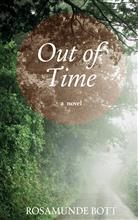 As a writer who is also a professional genealogist, I find that my work feeds my writing, and the research I do for my novels feeds my family history research. It is rather a perfect marriage. I have been writing historical, or historical ‘time slip’ novels for some time now, and I have at last felt confident enough to go ahead and self-publish one. It is called Out of Time and it has been published on Kindle since March and as a printed book at FeedARead since May.
As a writer who is also a professional genealogist, I find that my work feeds my writing, and the research I do for my novels feeds my family history research. It is rather a perfect marriage. I have been writing historical, or historical ‘time slip’ novels for some time now, and I have at last felt confident enough to go ahead and self-publish one. It is called Out of Time and it has been published on Kindle since March and as a printed book at FeedARead since May.

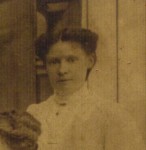 My Great Aunt Florrie died young. My mother thought that she had probably never married. That’s about all I knew about her before carrying out my research.
My Great Aunt Florrie died young. My mother thought that she had probably never married. That’s about all I knew about her before carrying out my research.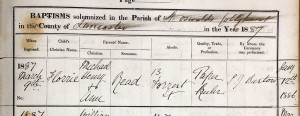 I have been unable to find Florrie on the 1901 census with any variation of her first or second name. It may be that, like my grandmother, she was fostered out while her mother was in the workhouse infirmary and may be listed with a different surname.
I have been unable to find Florrie on the 1901 census with any variation of her first or second name. It may be that, like my grandmother, she was fostered out while her mother was in the workhouse infirmary and may be listed with a different surname.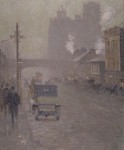 that led up to it, and she serves to remind us that, 100 hundred years on, our urban centres are generally far healthier places to live now than they were then.
that led up to it, and she serves to remind us that, 100 hundred years on, our urban centres are generally far healthier places to live now than they were then.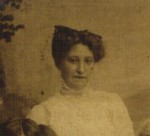 This is the third in my series of Women during WWI – focusing on the lives of my grandmother and her sisters. Before researching Agnes I knew very little about her, except that my mother thought that she had been an actress at one time.
This is the third in my series of Women during WWI – focusing on the lives of my grandmother and her sisters. Before researching Agnes I knew very little about her, except that my mother thought that she had been an actress at one time. A recent article in the
A recent article in the 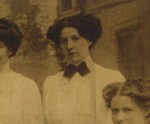 This is the second in my series about my grandmother and her six sisters and their lives, focusing on how the First Word War affected them. This article is about the second eldest sister, Alice.
This is the second in my series about my grandmother and her six sisters and their lives, focusing on how the First Word War affected them. This article is about the second eldest sister, Alice.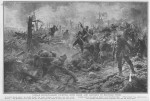 The record of Ernest’s death records that he was a private in the Manchester Regiment of the 20th Battalion, number 17455. I was able to find out a bit more about this unit at the very useful and informative site at
The record of Ernest’s death records that he was a private in the Manchester Regiment of the 20th Battalion, number 17455. I was able to find out a bit more about this unit at the very useful and informative site at 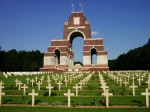 also gave me a plot number. It is nice to know that the next time I am in France I could visit his grave on behalf of my Great Aunt and her family.
also gave me a plot number. It is nice to know that the next time I am in France I could visit his grave on behalf of my Great Aunt and her family.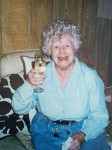 records for him in Australia. As for young Alice, she married (possibly twice) and emigrated to Hawaii and did a lot of work for voluntary organisations. She visited the UK about 15 years ago and we met her for lunch in Stratford on Avon. She was a lovely, lively lady, and died a few years ago leaving my mother a small legacy. She must have been well into her nineties when she died.
records for him in Australia. As for young Alice, she married (possibly twice) and emigrated to Hawaii and did a lot of work for voluntary organisations. She visited the UK about 15 years ago and we met her for lunch in Stratford on Avon. She was a lovely, lively lady, and died a few years ago leaving my mother a small legacy. She must have been well into her nineties when she died.
 Before writing this, these are the facts I knew about my great-aunt Maud Reid: She was born in Manchester in about 1882, and before, during and after the war she was a nurse. My mother remembers her husband as ‘Uncle Willie’. Mum also remembers her as a handsome, elegant woman.
Before writing this, these are the facts I knew about my great-aunt Maud Reid: She was born in Manchester in about 1882, and before, during and after the war she was a nurse. My mother remembers her husband as ‘Uncle Willie’. Mum also remembers her as a handsome, elegant woman.
 women – mostly middle and upper classes – offered their services at the outbreak of World War I, the Red Cross did not want civilian women serving overseas as they were not used to the hardships of the front line. However, the records show that those who did serve on the front line acquitted themselves with great fortitude and efficiency. As nurses became more and more necessary overseas, volunteers over 23 and with more than three years of hospital experience were allowed to serve overseas. VAD hospitals also opened at home in large British towns.
women – mostly middle and upper classes – offered their services at the outbreak of World War I, the Red Cross did not want civilian women serving overseas as they were not used to the hardships of the front line. However, the records show that those who did serve on the front line acquitted themselves with great fortitude and efficiency. As nurses became more and more necessary overseas, volunteers over 23 and with more than three years of hospital experience were allowed to serve overseas. VAD hospitals also opened at home in large British towns.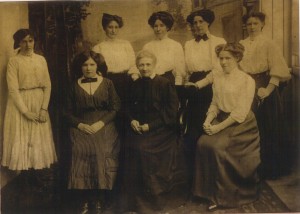 With the centenary of World War I starting this year, I thought it would be a good idea to create a series of blogs about women during the World War I. But I don’t want to do just a generalised history of women at this time. Instead, I am going to use my grandmother and her six sisters to give a more personal viewpoint of what life was like for women before, during and after the war.
With the centenary of World War I starting this year, I thought it would be a good idea to create a series of blogs about women during the World War I. But I don’t want to do just a generalised history of women at this time. Instead, I am going to use my grandmother and her six sisters to give a more personal viewpoint of what life was like for women before, during and after the war.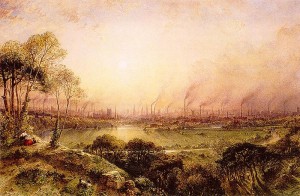 Manchester is of course one of the most significant cities in Britain during the Victorian period. Not only was it a huge centre of industry, with its cotton and other textile mills, iron foundries and railways, but for women, it was the centre of the suffragette movement, as this was where the Pankhursts were born and lived.
Manchester is of course one of the most significant cities in Britain during the Victorian period. Not only was it a huge centre of industry, with its cotton and other textile mills, iron foundries and railways, but for women, it was the centre of the suffragette movement, as this was where the Pankhursts were born and lived.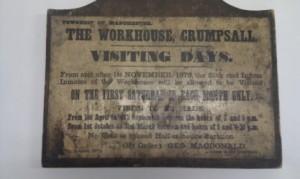 ichael Henry was dead of pneumonia, one of the common respiratory diseases that plagued industrial Manchester. For three years Ann Reid struggled to bring up her younger daughters, but on 28th December 1900, on my grandmother’s eighth birthday, she was admitted to Manchester Workhouse. I was able to obtain her admission record from
ichael Henry was dead of pneumonia, one of the common respiratory diseases that plagued industrial Manchester. For three years Ann Reid struggled to bring up her younger daughters, but on 28th December 1900, on my grandmother’s eighth birthday, she was admitted to Manchester Workhouse. I was able to obtain her admission record from 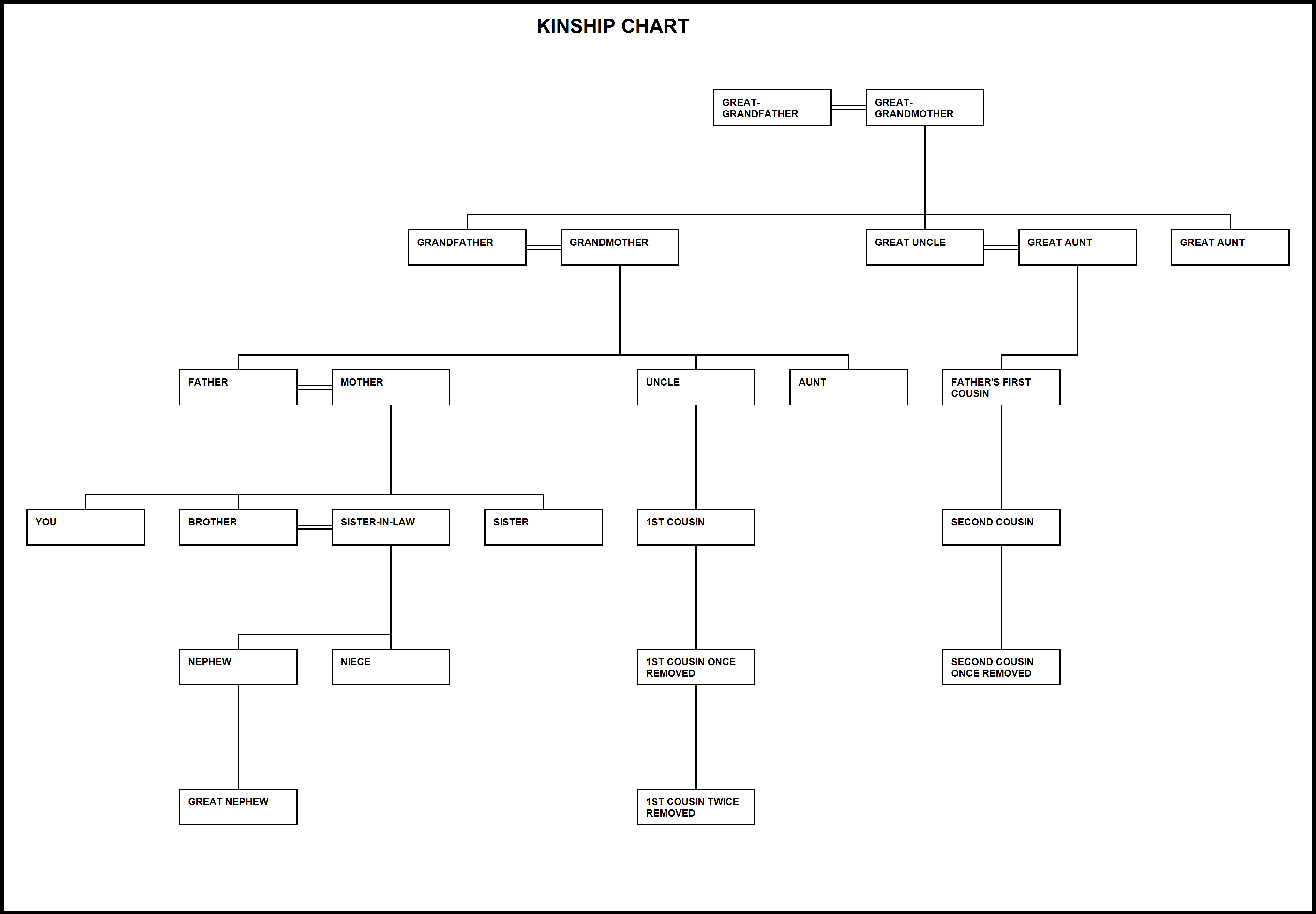
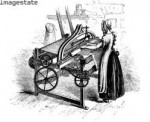 and with the ancestors doubling with every generation, you are never short of lines to research. But as well as going back as far back in time as possible, there is also the fascinating research that can be done into an individual’s or family unit’s background. Once you’ve got the bare bones of your family tree, it is then even more satisfying to dig deeper and find out about your ancestors’ lifestyles.
and with the ancestors doubling with every generation, you are never short of lines to research. But as well as going back as far back in time as possible, there is also the fascinating research that can be done into an individual’s or family unit’s background. Once you’ve got the bare bones of your family tree, it is then even more satisfying to dig deeper and find out about your ancestors’ lifestyles.